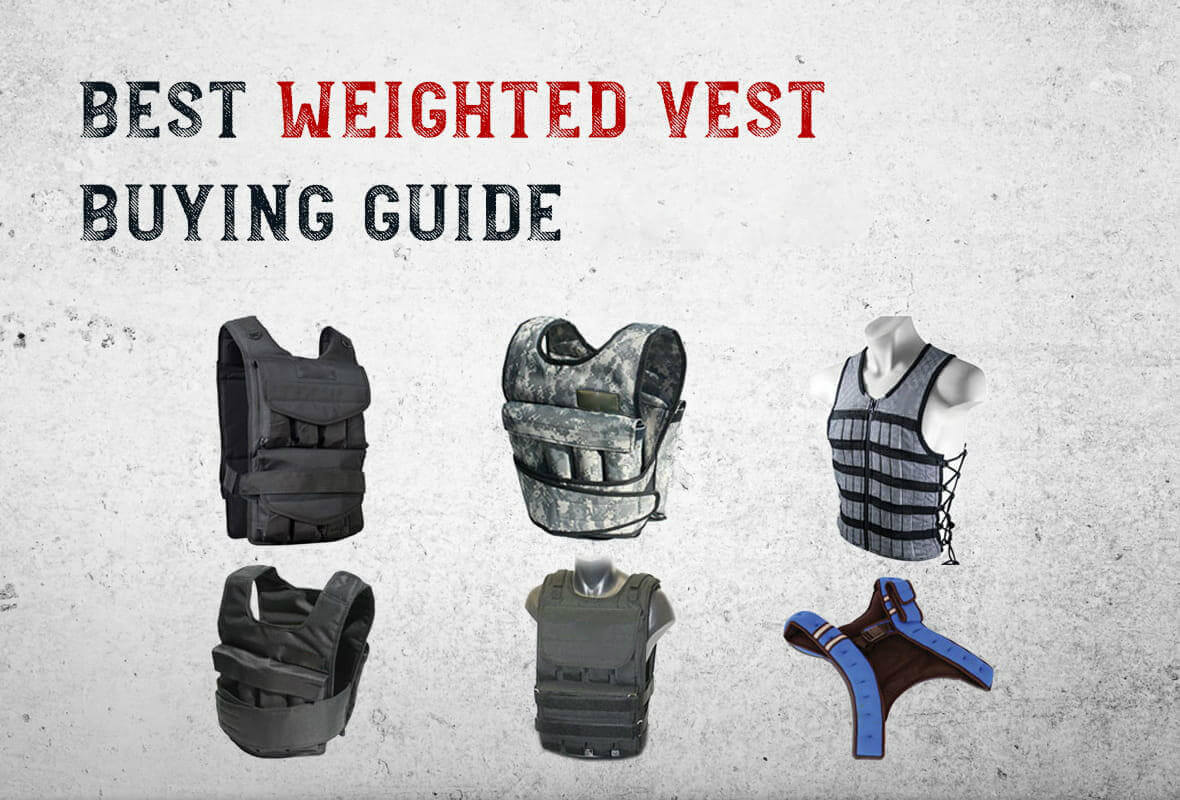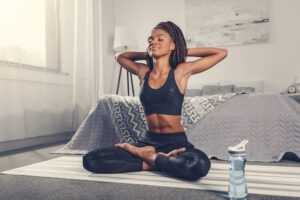Need to go shopping for weight vests? Before you make a random purchase, you should know that they’re all not the same!
A weight vest, also known as Functional Training vest, weighted training vest, and weight loss vest, etc., can be a helpful fitness accessory.
While there may be lots of contents out there on workout vest buying, most of them are simply descriptions and product reviews of specific brands. What you need is a solid criterion that allows you to choose or reject products from any options available to you.
In this comprehensive weight vest buying guide, we have addressed them in general instead of highlighting certain brands. To keep up the authenticity of this blog, a lot of the information was sourced from insiders in the industry who have hands-on experience with weight vests and their manufacturing.
In five minutes, you will be able to judge any kind of weight vest for yourself. This guide addresses:
- The kinds of weight vests you should be considering for your gym
- The main features you should check before buying
- Traps to beware of when making your purchase
Table of Contents
1. Weight Vest Types
There’s a wide variety of exercise vests available out there. Those who aren’t familiar with their usage can find it challenging to choose what to buy. You should at least have knowledge of the basic differences between fitness vest categories, i.e., fixed vs. adjustable, male vs. female, and full-sized vs. short-stack.
1.1 Fixed vs Adjustable Weight Vests
Fixed Weight Vest
Fixed weighted training vests have a fixed, built-in weight instead of being adjustable. These are comparatively lighter than adjustable vests, so we would recommend them for beginners. The weights are sewn inside so that they don’t shift during your workout.
Fixed weight vests are also often slimmer, so you can move more freely. They’re generally more affordable than adjustable ones, owing to their lighter weight.
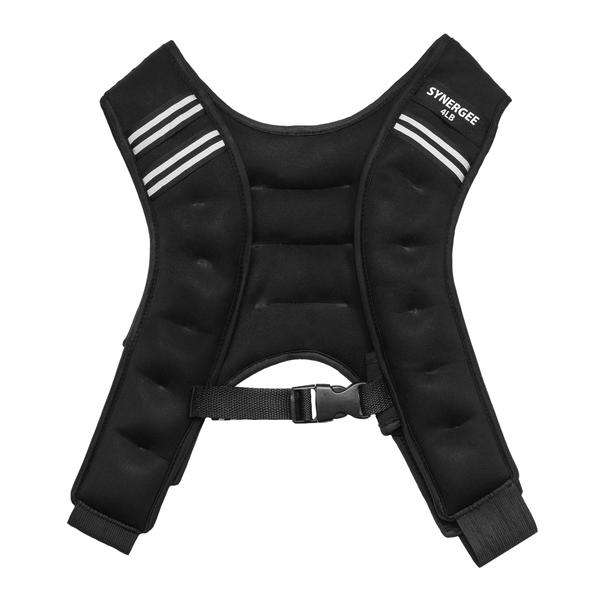
Adjustable Weight Vest
Most buyers prefer adjustable weight vests since they allow the weight to be added or removed. Their purchase includes sandbags or metal bars that can be loaded or unloaded to suit your preferences. These allow enough flexibility for a smooth yet challenging workout and can be suitable for both intermediate users and professionals.
Adjustable exercise vests come with different forms of adjustment methods. Iron ingots are the most commonly used form of resistance, weighing between 3 and 5 lbs, and allowing free movement during exercise.
If you’d like to start with a lighter weight and slowly increase it as you become fitter, an adjustable weight vest can be a great option. You can change the weight to suit many different kinds of workouts, such as running and other exercises that won’t make the weights shift a lot.
1.2 Male vs Female Weight Vests
Although many training vests out there are meant for both men and women, some ladies might not find them comfortable. Females need a different form of fit than males, with a slimmer shape overall but more space in the chest region. That is why you can find different vests for males and females available in the market.
Male Weight Vest
These are typically heavier and are best suited to workouts involving bodybuilding and toning. Male fitness vests also allow a great amount of tightening so that you can avoid shifting as much as possible.
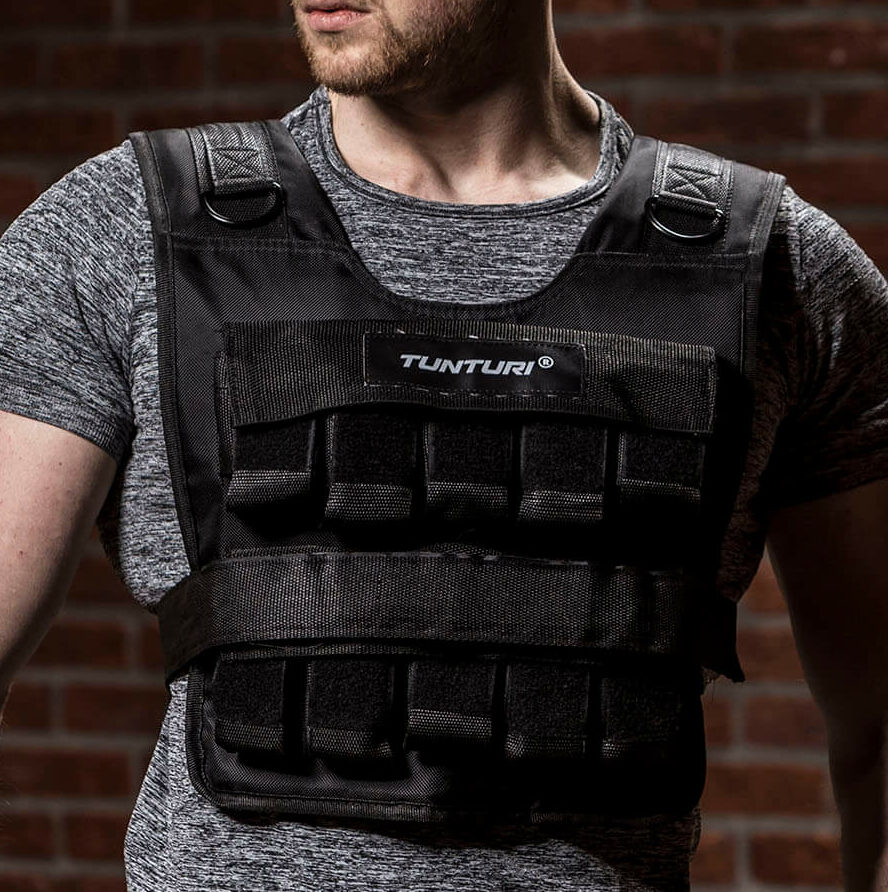
Female Weight Vest
These are typically lighter, often with fixed weights. They also have a V-shaped form, being snugger over the waist.
1.3 Full-sized vs Short Stack Weight Vests
Full-sized Weight Vest (Running Vests)
Full-sized vests are designed to cover your entire torso, evenly distributing their weight on the front and back. These can be great when you need to take your running routine to the next level. However, you should expect the movement to be somewhat limited while crunching or bending, etc.
You can feel the advantage of a full body weight vest added to your run even with short distances. With adjustable vests, you can gradually increase the weight as it gets less challenging. Vests made specifically for running are often comparatively lightweight and slimmer to allow greater mobility.
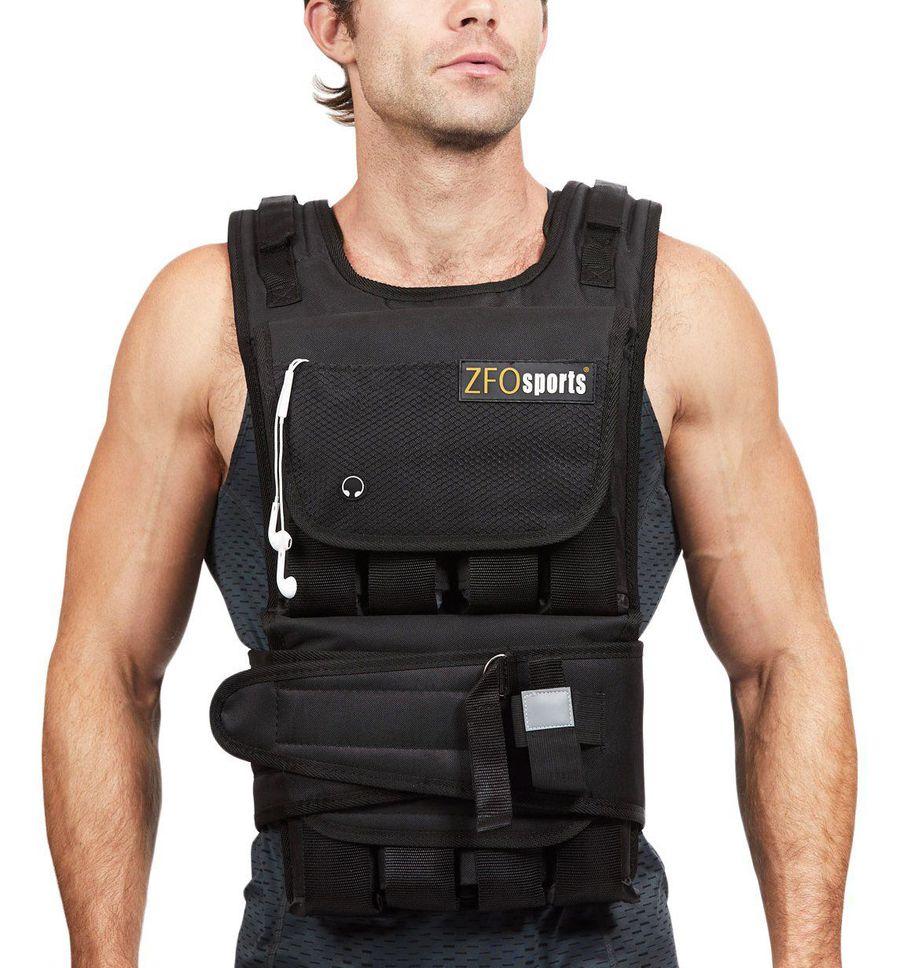
Short-stack Weight Vest (Functional Training Weight Vest)
Short-stack weight vests don’t extend up to your abdomen, covering only your chest and upper back. They are popularly used in Functional Training workouts since those are a combination of aerobics and resistance training. A weighted vest included in a Functional Training routine can be especially useful in isolating specific muscles, which can be very tricky with conventional exercising methods.
Pro Tip: Always take care to select the right weight for yourself when purchasing a fitness vest. The weights you can bear too easily won’t be of much use, while too heavy weights may cause injury
2. Weight Vest Physical Structure
2.1 Cover Material
The top 2 factors that can decrease the life of your weight vest are moisture and rips. Sweating can cause a low-quality weight vest to become germy due to thriving bacteria. Vigorous exercise can cause cheaper weight vests to get stretched or torn. What you need is a heavy-duty vest made of antibacterial or moisture-proof material that is durable enough to keep up with your workouts.
The material of a weight vest plays an important role in determining its quality.
As opposed to synthetic plastic vests, those made of a stretchable material like a Lycra/Spandex combo provide a lot more comfort and are durable.
It’s probably the least comfortable weighted vest material.
Go for vests made of soft nylon for ideal strength and durability.
While these weight vests offer great durability, comfort, and breathability, they’re not suited for use over bare, sweaty skin for long periods.
It’s long-lasting and moisture-proof, often used as a covering layer over fabric and nylon.
Pro Tip: To extend the life of a weighted training vest while protecting yourself from bacterial infections, we strongly recommend wearing a T-shirt with sleeves under your fitness vest, whatever its material, and avoiding contact with bare skin.
2.2 Weight Filling Material
Sand Bags
Pros:
- Reasonably priced
Cons:
- May smell bad
- The weight distribution may be out of balance
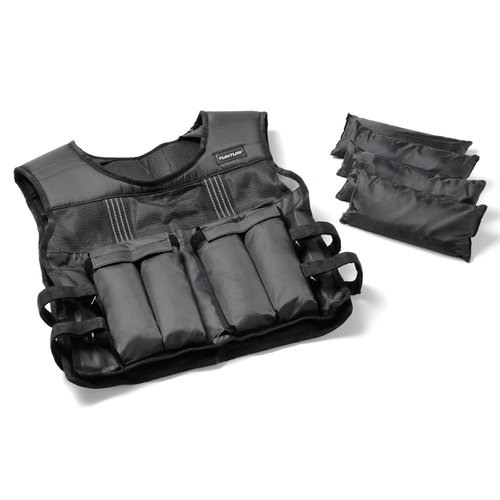
Metal Shots / Bars
Pros:
- Lesser chances of giving off a bad smell after a few uses, unlike sand
- Compact, unlike sandbags. This allows them to be slimmer and fit you more snugly
- Balanced weight distribution makes them comfortable while preventing injury
- Low-maintenance and less likely to tear
Cons:
- The metal may cause the fabric to tear after routine use. To make it more durable, some top manufacturers make the corners rounded. This decreases its chances of ripping the fabric.
- Pro Tip: If your vest comes with weights, always look for some form of protective covering that ensures the product’s durability. Either the metal itself should be coated, or it should be snugly covered by neoprene to avoid rusting.
Pro Tip: If your vest comes with weights, always look for some form of protective covering that ensures the product’s durability. Either the metal itself should be coated, or it should be snugly covered by neoprene to avoid rusting.
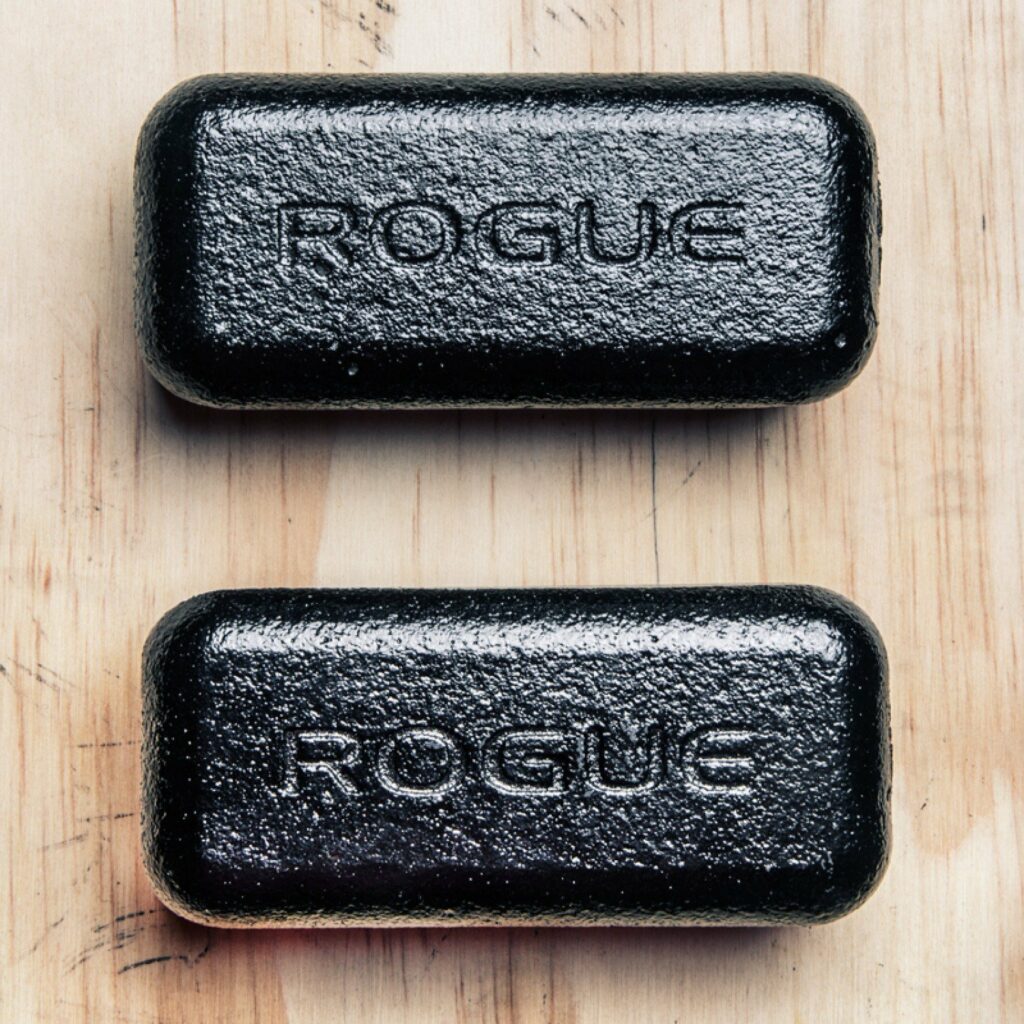
2.3 Weight Vest Accessories
Another thing to consider is whether your weight vest has convenience features that make it compatible with accessories like your phone and keys, etc. Certain helpful details in the design of a weight vest can make it very functional.
While it’s up to you if you want these additional perks, we have mentioned them below:
- Some weight vests have an extra pouch to carry your phone, iPod, keys, or cash.
- Reflective strips on fitness vests allow better visibility.
- Sometimes, weighted training vests will have attachments for keys or a carabiner.
- Some weight vests include a sweat-proof sleeve that fits underneath them.
- You may even find vests with a water bottle holder.
- Accessory features can be very helpful if you’re used to carrying essentials like your phone and keys with yourself.
3. Weight Vest Physical Properties
3.1 Size
One Size Fits All
The majority of weighted vests are marketed as having only one size that fits all or most people. This, however, may not be true, especially for women who often require more chest space.
If you’re buying a one-size-fits-all kind of weighted vest, make sure that it has enough adjustment options. Such weight vests of top brands offer fully adjustable straps at the chest, waist, and shoulders, and may also have Velcro belts for a close fit.
Short Stack or Full-Sized – Which One to Choose?
Weight vests can be categorized as either full-sized or short stack based on their design.
As mentioned previously, full-sized weight vests cover your whole torso up to your abdomen. It distributes the weight evenly throughout your front and back. However, it can limit movement to some degree since it covers the waist. You may experience difficulty in bending or crunching, so it may not be suitable for certain exercises.
If this kind of limited movement can be a problem for you, go for short stack weight vests. These only offer coverage up to the chest, leaving you abdomen free to move and bend. The only potential disadvantage with such vests is the uneven distribution of weight, which targets just the chest and back. This may cause strain in these areas due to overloading.
Pro Tip: We always suggest short stack vests to those who need to perform mobility training or Functional Training workouts. Other than that, you’re better off with a full-sized vest for routine exercise or running.
3.2 Weight
How Much Weight Do You Need?
If you’re looking for expert opinion, the heaviest vest they recommend is 20% of your body weight. Anything more than that could harm your health and may cause injury over time.
Actual Weight vs. Stated Weight
While you might think manufacturers deliver the exact weight they claim in a vest, it’s not always true. Many fitness vests are available with nominal weights, meaning that they weigh almost as described. However, this variation is only by a small amount and is neither significant nor a cause for worry.
If your vest was to weigh EXACTLY as stated, it would need weights that have undergone specialized machining, which would automatically hike up the price. Therefore, at Yanre Fitness, we offer affordable weight vest options having nominal weights instead of precision-machined ones.
Weight Distribution
Even weight distribution is an essential factor to keep in check when buying a weight vest. Good-quality vests are always designed to balance the weight throughout their surface, moving with you and enabling you to bend with ease. This ensures ideal ergonomics, making the vest safe to use and as comfortable as possible.
Pro Tip: You will be able to avail your weight vest to the fullest if there is a balanced distribution of weight in the front and back. A snug vest that fits well should also be your priority since it will help you avoid injury and lateral stress.
Weight Adjustability
A fitness vest that allows weight adjustment can be very convenient and useful in the long term. It will enable you to choose an appropriate weight according to your fitness level and add more as you progress. Adjustable weighted training vests commonly allow a weight range between 2 and 40 lbs, but some may allow up to 60 lbs or even more. The greater the adjustability, the greater use it’ll be able to provide.
A weight vest that is adjustable in increments is an added plus, allowing you to fine-tune the amount of weight even further.
Pro Tip: The best weighted vests are fast and simple to adjust during your workout.
3.3 Durability
Durability is the most obvious factor that speaks for itself. It takes several properties into account such as the manufacturing process, materials used, and resistance to wear and tear. Impermeable materials like heavy-duty fabrics are often more durable and provide fair usage before they start to wear.
The construction of a vest also matters, with good indicators being seam strength, strap width, and the weight pouch’s quality. Moreover, a good warranty package also counts since it has you covered in case of any mishap or malfunctioning.
Many fitness vests weigh as much as 30kg. It’s always good to invest in a high-quality vest since it will be taking a fair beating as you work out. With a cheap vest, you might even end up spending more due to the frequent replacements required!
3.4 Comfort
Comfort and fit go together and enable you to move freely with your vest on. Uncomfortable weight vests will just be distracting and decrease the effectiveness of your workout.
The comfort offered by a weighted vest directly affects both your safety and motivation during exercise. Avoid vests that have stiff materials, lack breathability, limit movement, or cause uneven weight distribution that may pull your shoulders or create lower back strain. Go for vests that provide good airflow, moisture-wicking features, compact weights, multiple adjustability features, soft and stretchy fabrics, and a close fit.
Vests with narrow shoulder straps should also be enough to keep you away. These throw off the weight balance across your shoulders, resulting in digging into the skin and hurting when you increase the weight.
3.5 Breathability
Since weighted vests are often meant for commercial use, their fabric’s breathability is worth considering. The more you heighten your workout intensity, the more likely you will create body heat and sweat. A vest that doesn’t have breathable fabric can leave its wearer hot and uncomfortable, and likely in no mood for working out for longer periods.
The highest-quality weight vests are made of light yet strong fabric that is breathable and repels moisture. With a non-breathable vest, you will likely feel as if you’re wearing a garbage bag, and get too hot and sweaty to exercise soon.
4. Buying Tips and Traps to Avoid
- Filling Material Coating: Coated metal or a neoprene covering of any metal weights used in the vest is essential to protect it from rust.
- Coverage: Except for Functional Training and high-mobility exercises that are better done with short stack vests, always go for full-sized vests, which can be ideal for running and other everyday workouts.
- Weight Distribution: Make sure that your vest distributes the weight evenly instead of throwing it off balance. Aim for a snug fit, as closely adapted to your body as possible.
- Easy to Use: Weight vests should have adjustment straps, but not so much in case that they’re difficult to put on and too complicated to use.
5. Conclusion
With the wide variety of weight vests available out there, choosing the right kind for yourself can indeed be puzzling. However, now that you have learned the general criteria on weight vest purchase, you’ll be able to confidently make up your decision.
In case you have any more queries related to fitness vests, drop a comment below, and we will surely get back to you soon.
Related reading: top 10 gym equipment brands in China
Get Your Instant Quote
Related articles:

